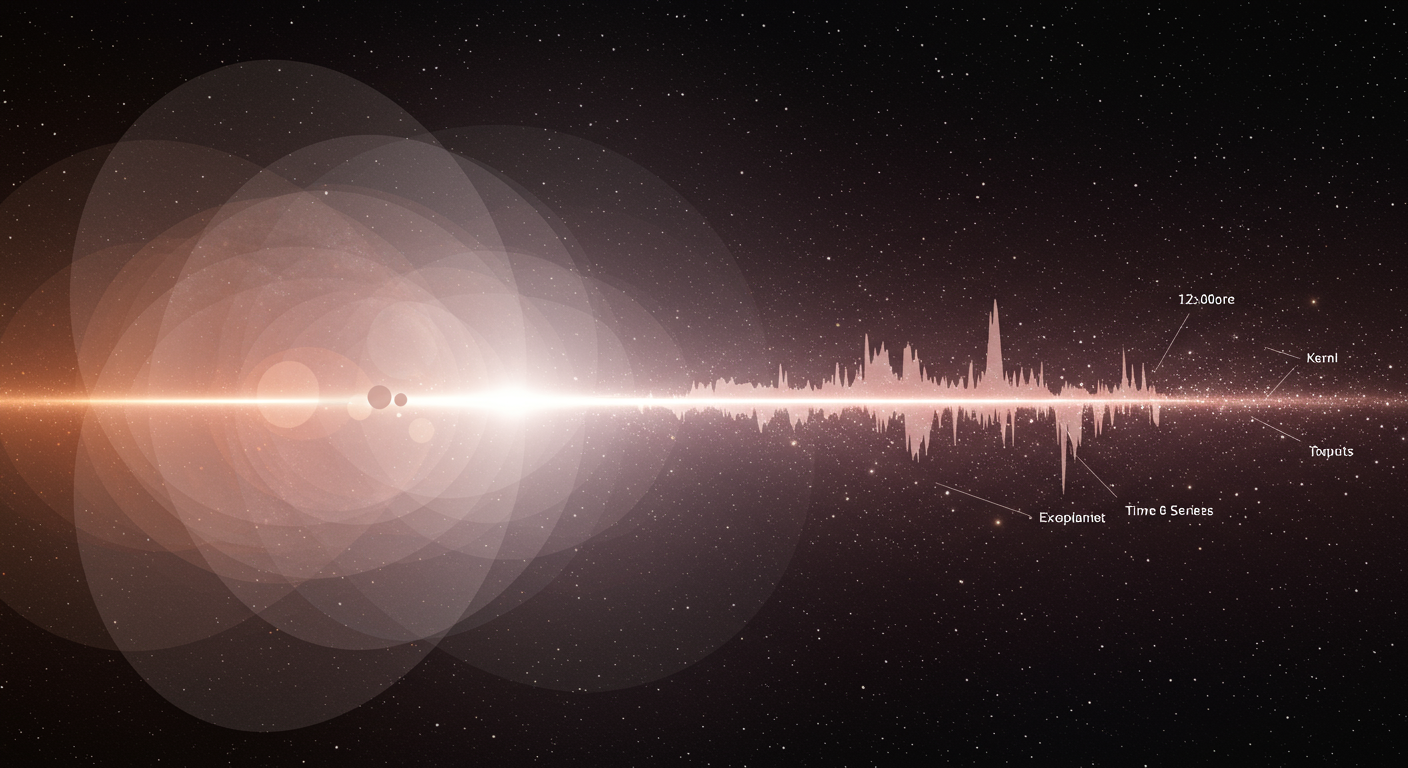Kernel-, mean- and noise-marginalised Gaussian processes for exoplanet transits and $H_0$ inference

In their recent work, 2311.04153, Namu Kroupa, David Yallup, Will Handley, and Mike Hobson present a novel Bayesian approach to Gaussian Process Regression (GPR) for analyzing time series data in astrophysics. This innovative method goes beyond traditional GPR by marginalizing over the kernel choice, hyperparameters, mean function, and noise models, offering a more robust and comprehensive analysis.
The paper tackles the challenge of kernel selection, a crucial step in GPR. Instead of relying on ad-hoc choices or computationally expensive searches, the authors introduce a Bayesian framework for kernel comparison. They compute the posterior probability of each kernel, allowing for direct interpretation and comparison through Bayes factors. This approach is particularly relevant in astrophysics, where kernel choices are often dictated by physical models and interpretability within the specific scientific context.
The authors demonstrate the power of their method through two compelling applications. First, they apply it to synthetic exoplanet transit light curves, showing how kernel marginalization improves the inference of physical parameters, such as limb darkening coefficients and orbital parameters. The method accurately recovers the true underlying kernel in low-noise scenarios, while effectively quantifying uncertainty when noise levels are high. This is crucial for exoplanet detection and characterization, where separating the planetary signal from noise is paramount. Specifically, using a Matern-3/2 kernel to generate synthetic data, they demonstrate that their method is capable of distinguishing this from similar kernels such as the Matern-5/2 kernel.
Second, the paper addresses the timely issue of inferring the Hubble constant ($H_0$), a fundamental cosmological parameter currently at the center of a significant debate. Using real-world measurements of the Hubble parameter as a function of redshift from cosmic chronometers and baryon acoustic oscillations, they infer $H_0$ values consistent with existing measurements while also quantifying the associated uncertainties. The Bayesian model comparison reveals a preference for a non-stationary linear kernel for the cosmic chronometer dataset, offering valuable insights into the underlying dynamics of the Universe’s expansion. Critically, their analysis demonstrates consistency between these two datasets, showing that they are not in tension.
The authors’ innovative methodology, thoroughly explored with both simulated and real-world data, presents a powerful tool for astrophysical and cosmological analyses. The ability to marginalize over kernel choices and other model parameters not only improves accuracy but also provides a more nuanced understanding of the uncertainties inherent in these complex datasets. This work significantly advances the field of GPR, offering a principled Bayesian framework for model comparison and parameter inference, as highlighted by the lead author, Namu Kroupa’s, contributions. This research draws upon the theoretical foundation laid by influential works in Gaussian Process regression and Bayesian inference such as those by Roberts et al. (2013) and Rasmussen & Williams (2005). Furthermore, the cosmological implications of this work are discussed in the context of current research on the Hubble tension, referencing studies such as Abdalla et al. (2022) and Di Valentino et al. (2021).




Content generated by gemini-1.5-pro using this prompt.
Image generated by imagen-3.0-generate-002 using this prompt.